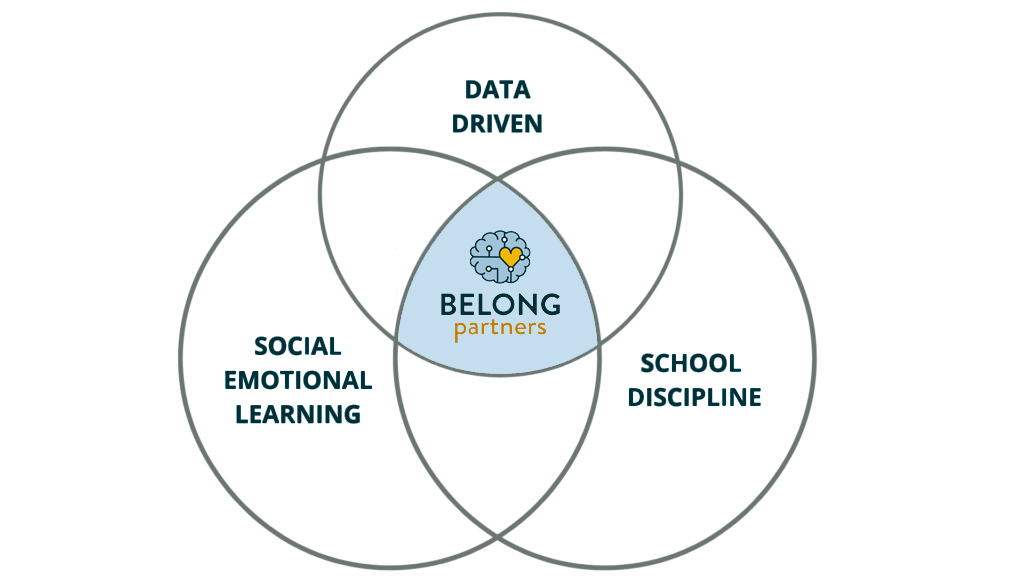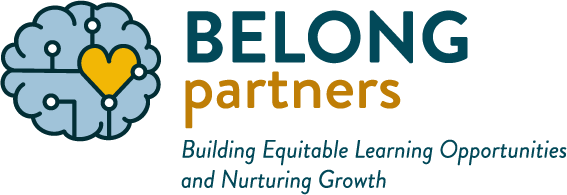Our Vision
We believe in a future where everyone thrives because they know they matter and belong.
Our Purpose
We build equitable communities that center the dignity, voice, and agency of young people.
Our Approach

We partner with schools and organizations to transform the ways adults teach, parent, and care for youth, by bringing together science-based, trauma-informed, restorative, and social emotional learning practices.
Courageous Educators: We facilitate school leaders and educators to build classroom communities and model an inclusive culture school-wide that promotes student agency and well-being.
Equitable School Systems: We coach administrators and educators to use data to identify and implement solutions that address damaging systemic patterns of inequity that target Black and brown students.
Connected Families: We train and coach families and caregivers in a child’s life to apply solution-oriented practices that instill critical social emotional life skills.
In addition to partnering with schools and districts, we offer workshops and consulting services for youth-serving organizations and adults seeking trauma-informed, practical, data-driven mindset and systems change.
Our Story
In 2007, Terry Chadsey and Dr. Jody McVittie co-founded Sound Discipline. They sought answers to these questions:
- What if every child knew they mattered and belonged in their classroom, in their school community, and at home?
- What if every child and adult were skilled at naming and regulating emotions, asking for and offering support, and finding solutions to problems?
- What if adults – educators, parents, caregivers – shared this vision and knew how to foster it?
At that time, these questions seemed radical. Though there may have been skepticism, the teachers and principals working with Sound Discipline were motivated to find solutions. They knew what they were doing was not working and they were discouraged.
The early work of Sound Discipline challenged head-on the often unexamined practices and systems used in education that are based on control, punishment, rewards, and exclusion.
Over time, our vision, purpose, and approach have all evolved. We are constantly learning and refining our programs. Our 2023 rebrand to BELONG Partners represents our work today – we now partner with schools and organizations to create equitable learning communities and transform the way adults teach, parent, and care for youth. We do this by bringing together science-based, trauma-informed, restorative, and culturally responsive practices.
Our values have continued to evolve and grow as well. They reflect our commitment to a vision of the future where everyone thrives because they know they matter and belong.
- Connection: We are rooted in relationships.
- Courage: We lead from the heart and challenge the status quo.
- Liberation: We work together to create a world that works for everyone because our freedom, joy, and struggles are deeply connected.
Today, we work with approximately 5,000 adults who, in turn, care for or teach 75,000 young people.
We have partnered with more 15,000 educators and 56 school communities in four states – Washington, Oregon, Idaho, and California – to integrate social-emotional learning and restorative practices into classrooms, schools, and districts.
